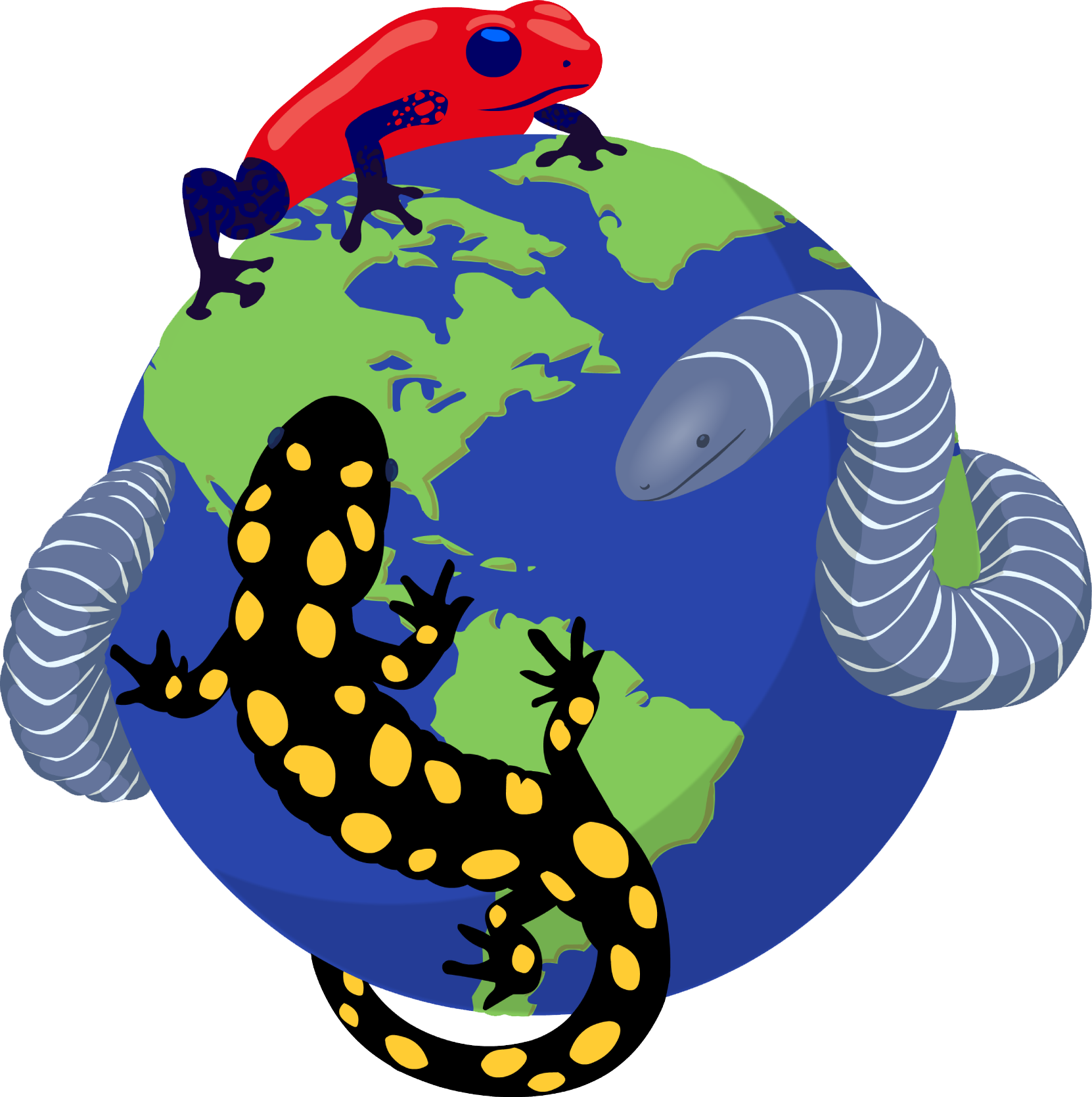|
Bolitoglossa coaxtlahuacana Palacios-Aguilar, Cisneros-Bernal, Arias-Montiel, and Parra-Olea, 2020
Coaxtlahuacán Salamander, Salamandra de Coaxtlahuacán Subgenus: Oaxakia | family: Plethodontidae subfamily: Hemidactyliinae genus: Bolitoglossa |
| Species Description: Palacios-Aguilar R, Cisneros-Bernal AY, Arias-Montiel JD, Parra-Olea G. 2020. A new species of Bolitoglossa (Amphibia: Plethodontidae) from the central highlands of Guerrero, Mexico. Canadian Journal of Zoology 98: 359–365 (dx.doi.org/10.1139/cjz-2019-0244). | |
|
|
|
Description The species can be distinguished from species belonging to other genera of neotropical salamanders by its lack of a sublingual fold. It is distinguished from other Bolitoglossa species by its discrete digits that expand distally and have distinct subterminal pads. It is also distinguished from other species by its smaller size, lack of a mental gland, and divergent nucleotide sequences. More specifically, B. coaxtlahuacana is different from other Bolitoglossa (Oaxakia) species in the following ways: B. caoxtlahuacana has a smaller body and a shorter tail than B. macrinii, the species it was originally classified under, as well as a broader head, narrower feet, smaller eyes, and fewer vomerine teeth. It differs from B. oaxacensis by its smaller body, shorter limbs, fewer vomerine teeth, and black dorsal coloring. A smaller body, shorter tail, shorter limbs, smaller head, narrower feet, and fewer maxillary and premaxillary teeth in B. coaxtlahuacana distinguished it from B. zapoteca (Palacios-Aguilar et al. 2020). In life, B. coaxtlahuacana has black dorsal and tail coloring. The dorsal side of the hands and feet as well as the snout and lips are brown. The irises are a golden color with red flecks near the pupil. The ventral side of the salamander is lighter. The bottom of the hands and feet are a gray color, and the underside of the chin is brown. It seems that the species may be able to change its color to a small degree, shifting between a black purple color and a dark gray on its ventral side. In alcohol, its coloration is mostly unchanged. However, the ventral side becomes more opaque and white iridophores become visible (Palacios-Aguilar et al. 2020). Distribution and Habitat Country distribution from AmphibiaWeb's database: Mexico
Life History, Abundance, Activity, and Special Behaviors They showed slow movements and used their prehensile tails to hold onto the vegetation (Palacios-Aguilar et al. 2020). Larva Trends and Threats Possible reasons for amphibian decline General habitat alteration and loss Comments PHYLOGENETIC RELATIONSHIPS: Bayesian inference analysis of the mitochondrial genes, 16S and cytb, has shown B. coaxtlahuacana to be most closely related to the clade composed of B. riletti and B. hermosa. It is next most closely related to B. zapoteca, then to the clade composed of B. macrinii and B. oaxacensis (Palacios-Aguilar et al. 2020). ETYMOLOGY: The species epithet, “coaxtlahuacana,” refers to the village of Coaxtlahuacán, Guerrero, where samples of this species were obtained (Palacios-Aguilar et al. 2020).
References
IUCN SSC Amphibian Specialist Group. (2019). "Bolitoglossa macrinii." The IUCN Red List of Threatened Species 2019: e.T59176A53976241. https://dx.doi.org/10.2305/IUCN.UK.2019-3.RLTS.T59176A53976241.en. Accessed on 31 August 2022 Palacios-Aguilar, Cisneros-Bernal, A. Y., Arias-Montiel, J. D., and Parra-Olea, G. (2020). “A new species of Bolitoglossa (Amphibia: Plethodontidae) from the central highlands of Guerrero, Mexico.” Canadian Journal of Zoology, 98(6), 359–365. [link] Originally submitted by: Harry Black (2022-11-01) Description by: Harry Black (updated 2022-11-01)
Distribution by: Harry Black (updated 2022-11-01)
Life history by: Harry Black (updated 2022-11-01)
Larva by: Harry Black (updated 2022-11-01)
Trends and threats by: Harry Black (updated 2022-11-01)
Comments by: Harry Black (updated 2022-11-01)
Edited by: Ann T. Chang (2022-11-01) Species Account Citation: AmphibiaWeb 2022 Bolitoglossa coaxtlahuacana: Coaxtlahuacán Salamander <https://amphibiaweb.org/species/9181> University of California, Berkeley, CA, USA. Accessed May 5, 2025.
Feedback or comments about this page.
Citation: AmphibiaWeb. 2025. <https://amphibiaweb.org> University of California, Berkeley, CA, USA. Accessed 5 May 2025. AmphibiaWeb's policy on data use. |


 Map of Life
Map of Life